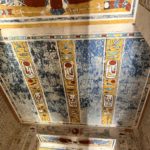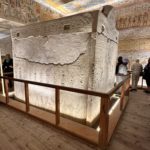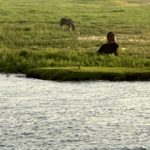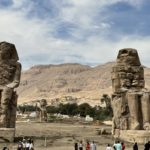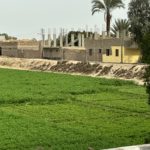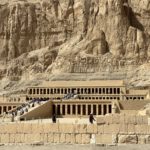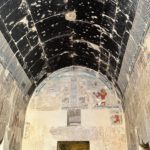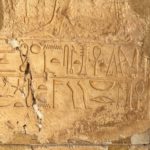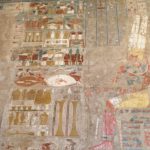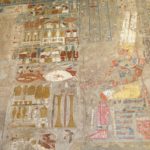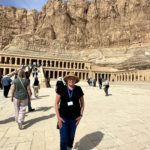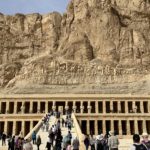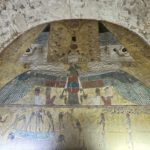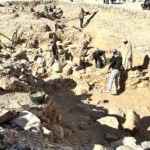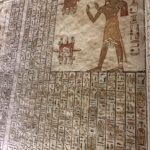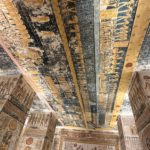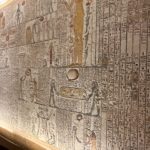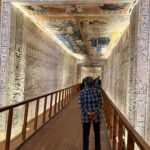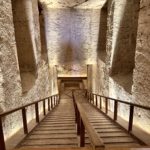Very early in the morning to beat the crowds, we drove across the river to a range of low mountains. A series of rugged ravines in these hills are known today as the Valleys of the Kings and Queens. Part of the greater Theban Necropolis UNESCO World Heritage Site, the Valley of the Kings encompasses so far 63 tombs and burial chambers cut deep into rock cliffs over a 500-year span. 23 of those are royal tombs; the rest belong to queens, royal family members, and high officials.We explored some of these sacred chambers, and saw elaborate hieroglyphs and paintings that are almost as vivid now as when they were painted 3,000 years ago. We visited the tomb of Ramses IV, Ramses IX, Tutankhamun (the Boy King – including his mummy), RamsesV and VI (same tomb), a queen’s tomb. Tombs were plundered in antiquity and the only one found intact was that of Tutankhamun, discovered by Howard Carter in 1922. The tombs were cut out of natural rock in the limestone hills of Quran which is naturally shaped like a pyramid. Tombs were cut and decorated by skilled workers and artists who lived nearby in an area known today as Dier El Madina (called Ta Set Maat in ancient Egypt which means the place of truth). Most of the tombs were discovered in modern times after French expedition scholars published the 24 volumes of Description of Egypt (published in 19th century). Tombs are decorated with religious scenes about the journey to the afterlife. There are many mortuary temples as well on this west bank of the Nile where kings were worshipped after their death.
When we arrived we were the 4th bus, when we left there was a vast sea of buses! We made a quick stop at a family operated alabaster/basalt stoneware shop. The descendants of the young boy who alerted Howard Carter to the location to the entrance of King Tut’s burial chamber by stepping in a hole.
Our next stop was the terraced Mortuary Temple of Hatshepsut (the Queen/King) whose Temple was built in the 18th dynasty by her architect Senenmut, who is buried nearby. It is an extraordinary monument which rises from the desert plain in a series of imposing terraces against a stark mountainous backdrop. It is decorated with scenes showing her divine birth, and an expedition to a foreign country called Punt, probably nowadays Somalia. Two of her granite obelisks had been transferred, one is still standing at Karnak. She ruled as a man, and was the longest-reigning female pharaoh.
On our way back to the ship, we stopped for a photo opportunity at the Memnon Colossi. They are 3400 year-old colossal statues of King Amenhotep III. Built of Quartzite sandstone, they originally stood in front of his mortuary temple.
Then finally lunch! 7 hours after we left for Kings Valley!
 Today, the Osa h/s Nebu set sail. As Luxor dwindled into the distance, we joined a procession of other cruise ships. This was the ideal opportunity to relax on the roof deck in 73 degree weather. As we passed tiny riverside villages and groves of date palms, we felt as if we’re witnessing scenes straight out of biblical stories. Glimpses of sand dunes and bare cliffs just beyond the slender strip of agricultural land attest to the life-giving importance of the Nile to this desert land
Today, the Osa h/s Nebu set sail. As Luxor dwindled into the distance, we joined a procession of other cruise ships. This was the ideal opportunity to relax on the roof deck in 73 degree weather. As we passed tiny riverside villages and groves of date palms, we felt as if we’re witnessing scenes straight out of biblical stories. Glimpses of sand dunes and bare cliffs just beyond the slender strip of agricultural land attest to the life-giving importance of the Nile to this desert land



